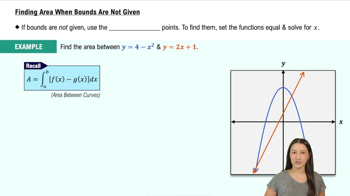Area functions for constant functions Consider the following functions ƒ and real numbers a (see figure).
(b) Verify that .A'(𝓍) = ƒ(𝓍)
ƒ(t) = 5 , a = -5

 Verified step by step guidance
Verified step by step guidance Verified video answer for a similar problem:
Verified video answer for a similar problem:



 6:11m
6:11mMaster Fundamental Theorem of Calculus Part 1 with a bite sized video explanation from Patrick
Start learning